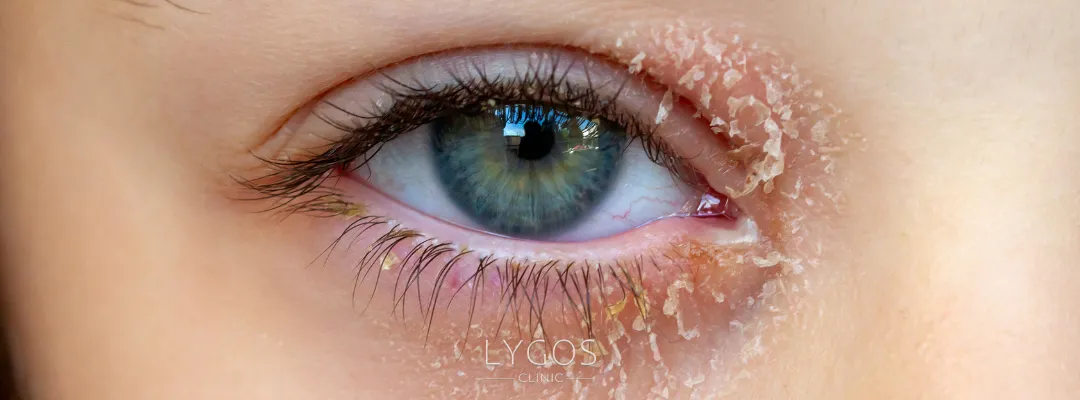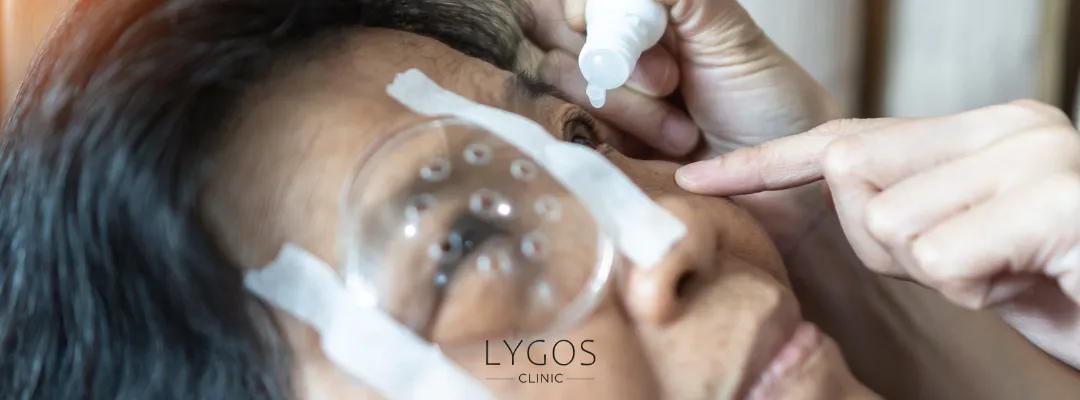What is Dry Eye? | Dry Eye Causes and Symptoms | LYGOS 2025

Dry Eye: Understanding the Symptoms, Types, and Best Treatment Options
Dry eye disease is a widespread condition impacting millions globally, often leading to considerable discomfort. This guide covers essential information about dry eye, including symptoms, causes, risk factors, and effective treatment options to manage the condition and find relief.
What is Dry Eye?
Dry eye is a condition where the eyes cannot maintain a healthy layer of tears to keep them lubricated and comfortable. Tears are essential for eye health, as they keep the eyes moist, nourish the corneal surface, and defend against infections. When tear production or quality becomes unbalanced, the result can be dry, irritated eyes with discomfort.
This imbalance in tear film, caused by insufficient tear production or increased evaporation, results in dry eye symptoms. These symptoms may vary in intensity, and in severe cases, untreated dry eye can lead to complications such as eye infections, corneal damage, or a decline in vision quality.
Dry Eye Symptoms
Understanding the symptoms of dry eye can help with early detection and timely intervention. Common symptoms include:
- Persistent dryness: A feeling of dryness or grittiness, often described as if sand or dust is in the eye.
- Itchiness and redness: The eyes may appear red and feel itchy, contributing to a constant urge to rub them.
- Burning or stinging sensation: For some individuals, this manifests as a burning or stinging sensation.
- Watery eyes: Paradoxically, dry eyes may also lead to excessive tearing as the eyes attempt to counteract the dryness.
- Blurry vision: Difficulty focusing or occasional blurry vision may occur, particularly after reading or screen time.
- Sensitivity to light: Many people with dry eye experience photophobia, or light sensitivity, which can make it difficult to stay in bright environments.
Identifying these symptoms early can significantly improve the quality of life for people with dry eye. Persistent symptoms should be addressed by an eye care professional to prevent further complications.
Types of Dry Eye Disease

Dry eye disease varies by cause and is generally divided into two primary categories:
1. Aqueous Deficient Dry Eye This type arises when the lacrimal glands do not produce enough tears. This type is more common in people with autoimmune diseases, such as Sjögren’s syndrome, where tear production is disrupted. In some cases, reduced tear production is linked to changes in hormone levels or the use of specific medications.
2. Evaporative Dry Eye Evaporative dry eye occurs due to dysfunction in the meibomian glands, which are responsible for creating the tear film’s oily layer that helps slow tear evaporation. When these glands become blocked or produce low-quality oil, tear evaporation increases, causing the eyes to become dry and irritated. Environmental factors, like windy or dry weather, and prolonged screen time are also major contributors to evaporative dry eye.
Risk Factors for Dry Eye Disease
Several risk factors can increase the likelihood of developing dry eye disease:
- Age: Older adults are more prone to dry eye due to natural tear production decline with age.
- Gender: Women, especially those experiencing hormonal changes from pregnancy, birth control, or menopause, have a higher risk.
- Medications: Certain medications—including those for allergies, congestion, depression, and high blood pressure.
- Lifestyle factors: Prolonged screen use, especially without regular breaks, can lead to dry eye symptoms.
- Environmental factors: Windy or arid climates and air-conditioned environments increase tear evaporation, exacerbating dry eye.
- Autoimmune conditions: Along with autoimmune diseases such as Sjögren’s syndrome, rheumatoid arthritis, and lupus, can negatively impact tear production, potentially worsening dry eye symptoms.
Understanding these risk factors can be helpful in prevention, as making lifestyle adjustments and managing underlying conditions may reduce dry eye severity.
Best Contact Lenses for Dry Eyes

For people with dry eye who need vision correction, selecting the right contact lenses is crucial. Here are some of the best types of contact lenses specifically designed for dry eyes:
1. Silicone Hydrogel Lenses For some individuals, specific types of contact lenses can offer relief. Silicone hydrogel lenses allow greater oxygen flow to the cornea, which may alleviate dryness. These lenses maintain moisture better than standard lenses and are recommended for those with mild to moderate dry eye.
2. Daily Disposable Lenses Daily disposable lenses offer the benefit of starting each day with a fresh, clean pair, which can be more comfortable. This minimizes protein buildup and irritants that can accumulate on lenses over time, making them suitable for dry eye sufferers.
3. Scleral Lenses Scleral lenses, which rest on the sclera (the white part of the eye), create a fluid reservoir over the cornea, helping to keep the eye surface hydrated. Scleral lenses are often recommended for those with severe dry eye.
4. Moisture-Retaining Lenses Some contact lenses are specifically designed with moisture retention technology. Brands like Acuvue Oasys and Biofinity offer lenses with enhanced moisture properties to alleviate dry eye symptoms. When selecting contact lenses, it’s best to consult an eye care professional to determine the most suitable option based on individual needs and the severity of dry eye symptoms.
Management and Treatment Options for Dry Eye

Effective dry eye management often involves addressing the root cause while offering symptom relief. Here are some effective treatment options for dry eye disease:
1. Artificial Tears and Lubricating Eye Drops Over-the-counter artificial tears are a commonly recommended initial treatment for dry eye relief. They help keep the eyes lubricated and can be used several times a day, depending on the severity of symptoms. For people with chronic dry eye, preservative-free artificial tears are often recommended to avoid irritation from preservatives in regular drops.
2. Warm Compresses and Eyelid Hygiene For evaporative dry eye, applying a warm compress can help open clogged meibomian glands, allowing the release of the oily layer necessary for tear stability. Regular eyelid hygiene, using a gentle cleanser, can also prevent blockages in these glands.
3. Omega-3 Supplements Omega-3 fatty acids, present in fish oil, flaxseed oil, and dietary supplements, have been shown to support eye health and reduce inflammation. Studies suggest that omega-3 supplementation can enhance tear quality and alleviate dry eye symptoms by promoting healthy oil production in the meibomian glands.
4. Prescription Medications In moderate to severe cases, doctors may prescribe anti-inflammatory medications such as cyclosporine (Restasis) or lifitegrast (Xiidra) to promote natural tear production. These medications are often used when over-the-counter treatments aren’t effective enough.
5. Punctal Plugs Other options may include punctal plugs, small devices that are inserted into tear ducts to slow down tear drainage, which helps keep the eyes moist. This method helps maintain a more stable tear film on the eye surface, providing prolonged relief for people with aqueous deficient dry eye.
6. Lifestyle and Environmental Adjustments Humidifiers: Humidifiers can add moisture to indoor air, reducing tear evaporation. Screen Breaks: Making lifestyle changes can further ease dry eye symptoms. The 20-20-20 rule (every 20 minutes, look at something 20 feet away for 20 seconds) is a popular technique. Protective Eyewear: Protective eyewear, such as wraparound sunglasses, can also shield eyes from dry or windy environments.
7. Advanced Treatments: Intense Pulsed Light (IPL) Therapy Additionally, advanced options like Intense Pulsed Light (IPL) therapy are now available to specifically address meibomian gland dysfunction. Originally used in dermatology, IPL has shown promising results in stimulating the meibomian glands and improving tear film stability, offering relief for individuals with severe evaporative dry eye.
Conclusion
With a complex condition like dry eye, personalized treatment is key to effective management. From understanding the types and symptoms to choosing the best contact lenses and treatment options, addressing dry eye involves both preventive care and targeted treatments. Anyone experiencing persistent symptoms should seek guidance from an eye care specialist for a proper diagnosis and tailored treatment plan. You can contact our expert team for more detailed information about dry eye.
You can click on the link to follow our social media content.



